
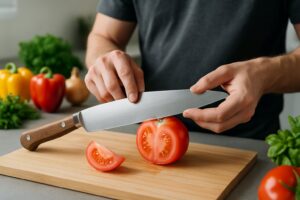

Ever wondered what different knives are used for? There is a wide range of styles and uses. This Knife Buying Guide covers all types of knives plus general care tips for beginners who are new to the knife world.
The guide covers:
These blades are used almost exclusively for cooking. Each knife has a unique curve and edge catered to the food type that it is best suited for.
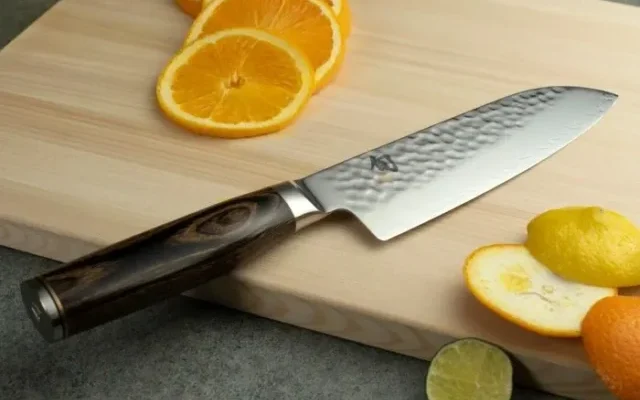
A quality Chef Knife is one of the most important tools in your kitchen. This all-purpose blade is up to 10 inches long and is designed for dicing, slicing, and chopping.
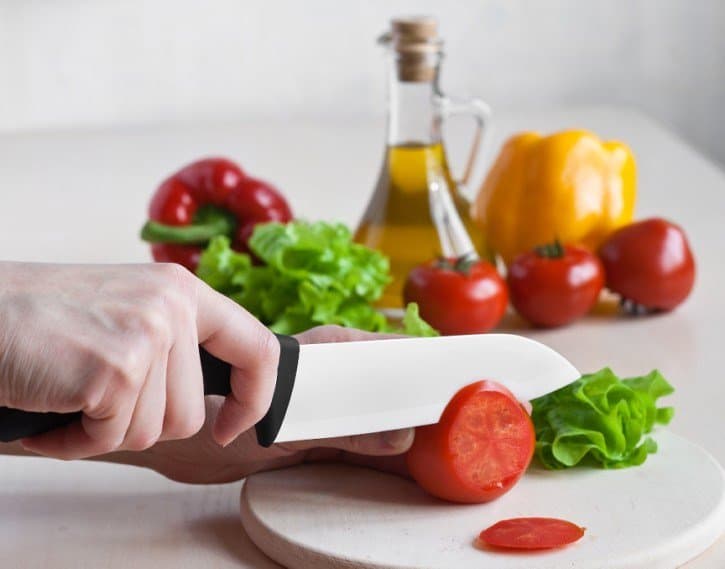
Ceramic Knives are a type of knife with a thin, non-stick coating that can be easier to clean and use in some instances.
When it comes to Ceramic Knife Sets, it’s a blade type or make, rather than a blade type by itself.
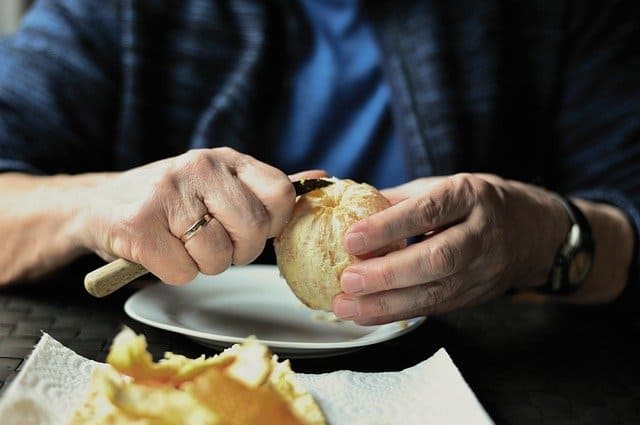
Paring Knives are small, short-bladed tools that are used for precise cuts. These knives can be used for tasks like peeling, deveining, deseeding, mincing and dicing.
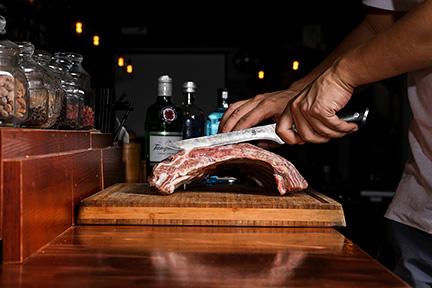
Boning Knives are primarily used to separate meat from bones.
While they do not have a lot of cutting power on their own, these knives are usually thin, and somewhat flexible to get into tough to reach crannies and nooks.
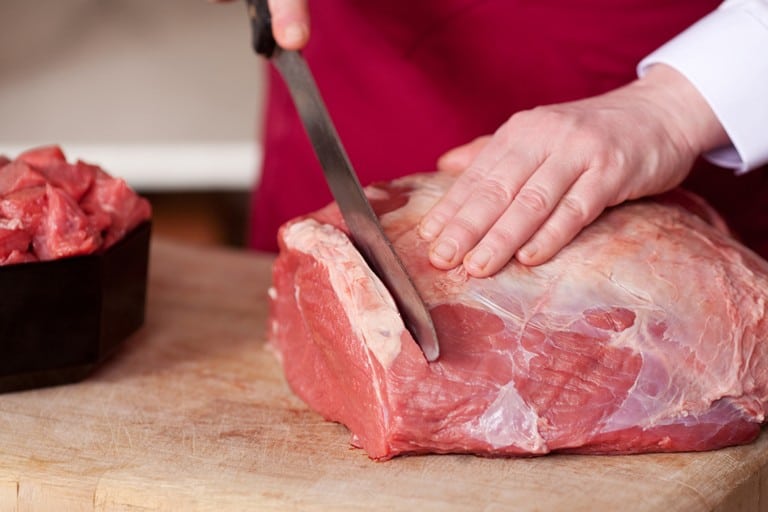
The Butcher’s Knife is a heavier weighted blade, that is used almost exclusively for cutting dense sections of meat.
Butcher knives usually have a noticeable straight-edge to help separate the meat from the bone.
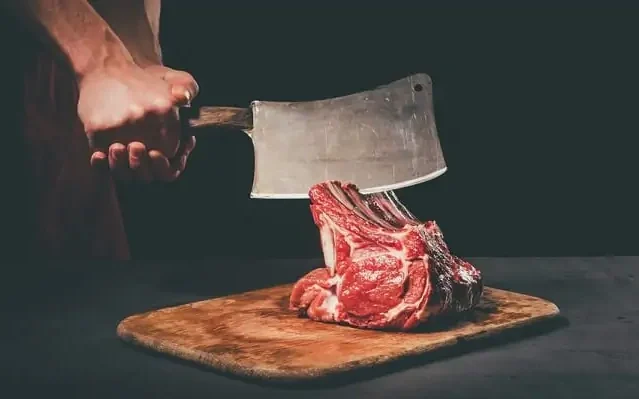
Cleavers, sometimes synonymous with butchers knives, are made for cutting through meats with typically bulkier blade design.
This is one of the few knives that are suitable for hacking through bone.
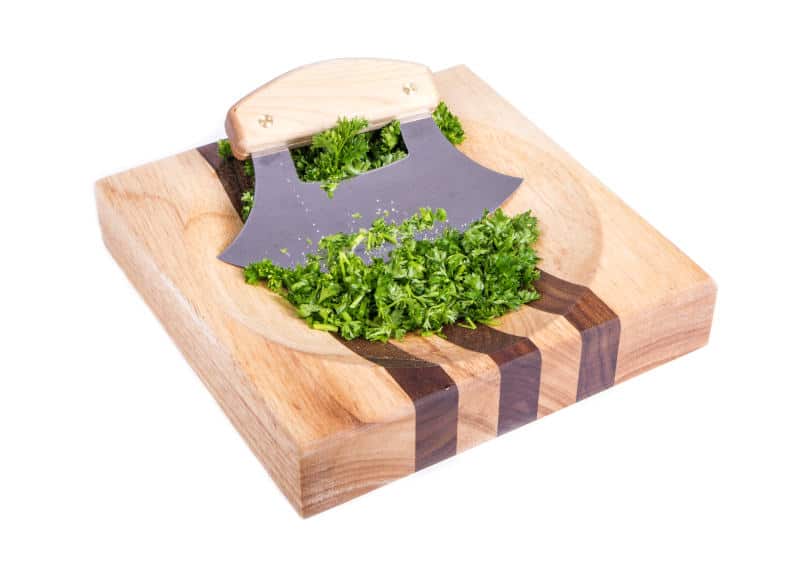
The Ulu Knife was originally used to remove meat directly from animal skins.
This old-fashioned curved blade can be used to cut meat effectively though it is much less common in the modern kitchen.
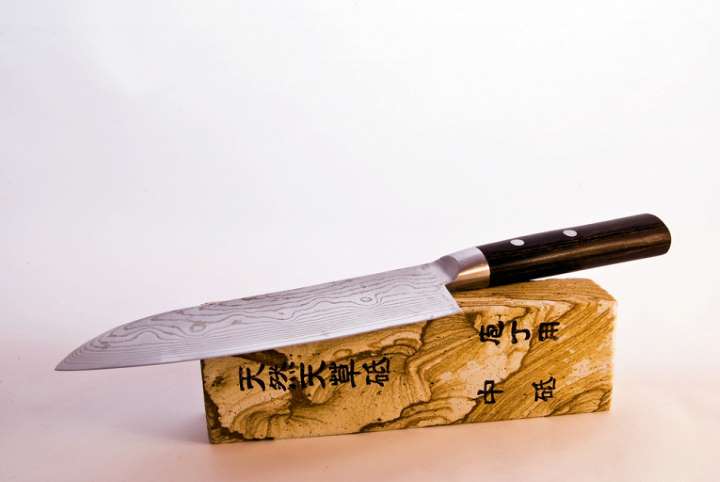
The Santoku Knife is a great all-purpose knife similar to a chef’s knife in that it can cut meat, fish, and vegetables.
The multipurpose blade is slightly wider than the usual chef knife, making it especially atoned to chopping vegetables with its long straight-edge construction.
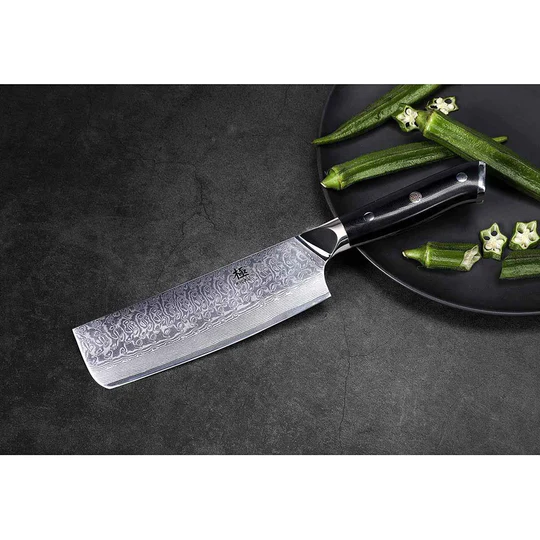
Nakiri Knives are made for chopping vegetables effectively and efficiently.
With their almost full straight-edged design combined with somewhat weighted construction, they can be confused with Vegetable Cleavers.
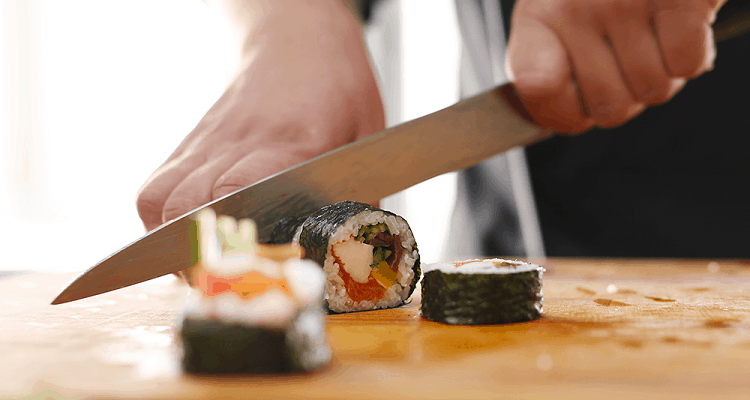
The Sushi Knife isn’t just good at crafting sushi but is preparing a whole number of dishes.
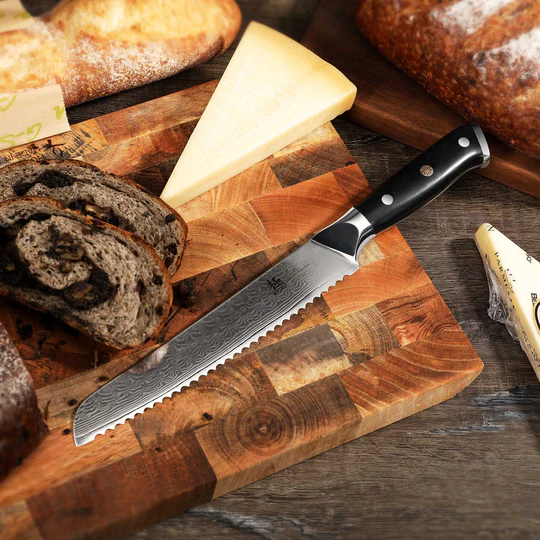
Bread Knives are commonly called wave knives due to their highly serrated appearance.
These blades are perfect for sawing through coarse loaves without using unnecessary arm power.
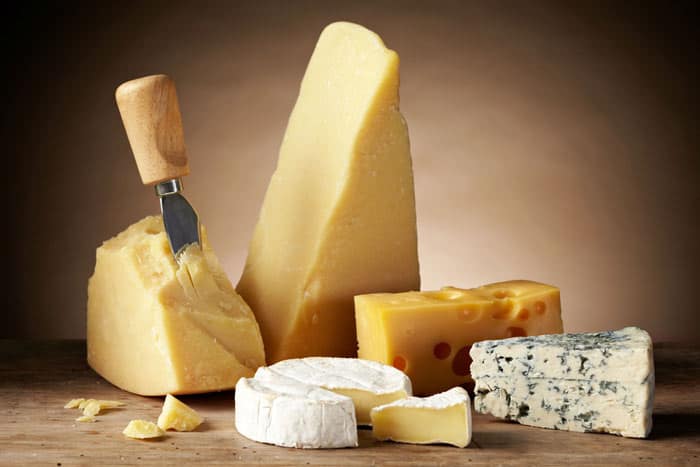
Cheese Knives come in a wide variety of shapes and sizes and are used to easily spread and cut dense cheese without producing excess friction.
Their sharpness level depends on what type of cheese the blades are marketed for.
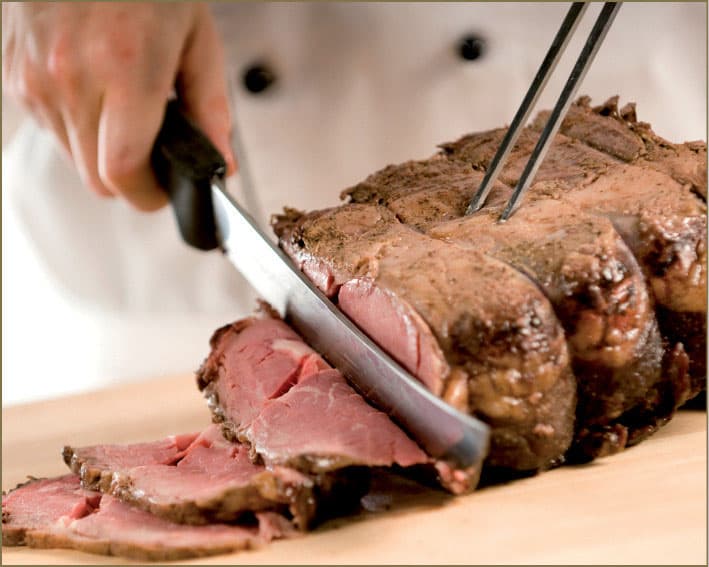
Carving Knives have noticeably narrower blades made for slicing and carving meats.
Carving blades can be used on a variety of meats and fish.
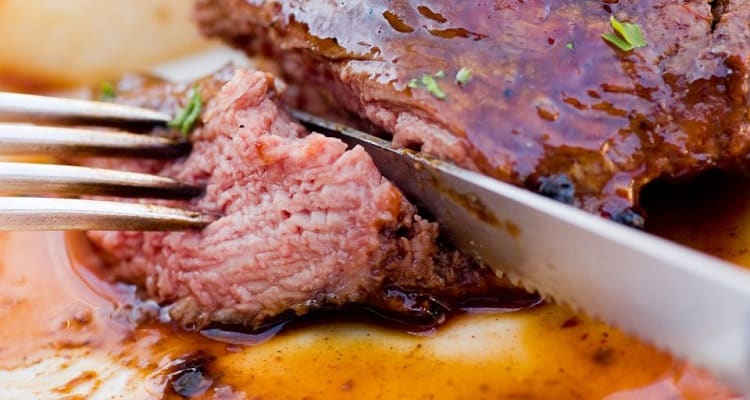
It’s a great idea to have a couple of Steak Knives on hand for whenever you serve protein-packed dishes to your guests.
These small, serrated blades are perfect for cutting meat for consumption.
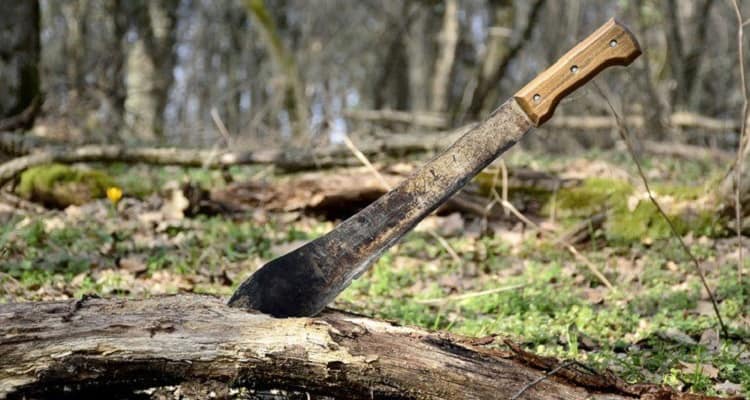
The Bolo Knife, or Bolo machete, is one of the best outdoor tools for survivalists and true outdoorsmen.
This powerful blade is perfect for chopping, cutting, and hacking away at thick green landscapes.
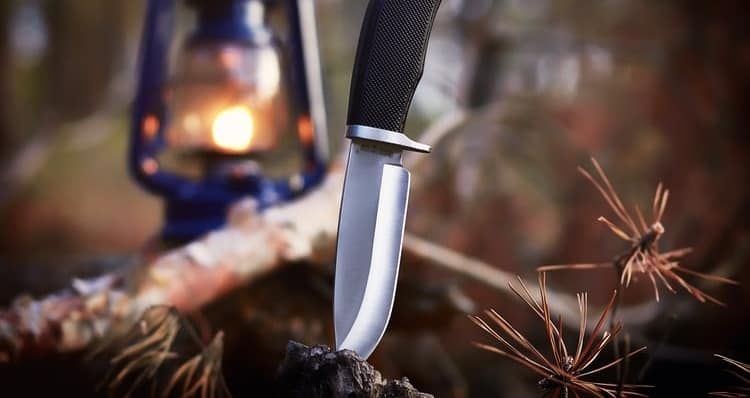
These beautiful hunting knives have a long, slightly curved blade that lends itself well to skinning or butchering when outdoors.
Bowie Knives have a very distinct appearance and history, which may make them great display blades as well.
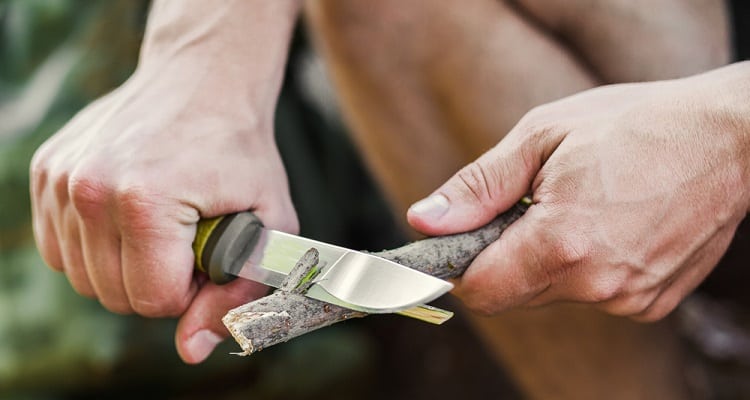
A Camping Knife can be used for a variety of purposes including splitting, kindling, food preparation, starting a campfire, whittling tent stakes, roasting sticks or marshmallows, skinning a game, and so on.
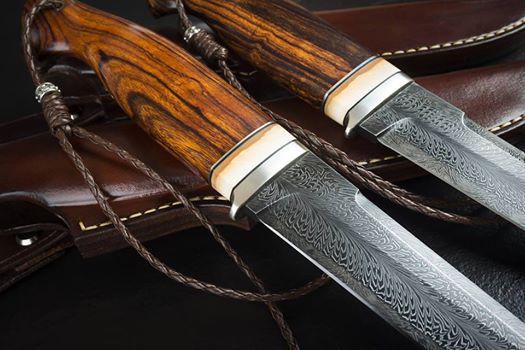
Damascus steel knives are usually hefty, well-constructed blades that hold up well over time.
They come in a variety of blade styles for hunting, fishing, or even basic cooking in some instances.
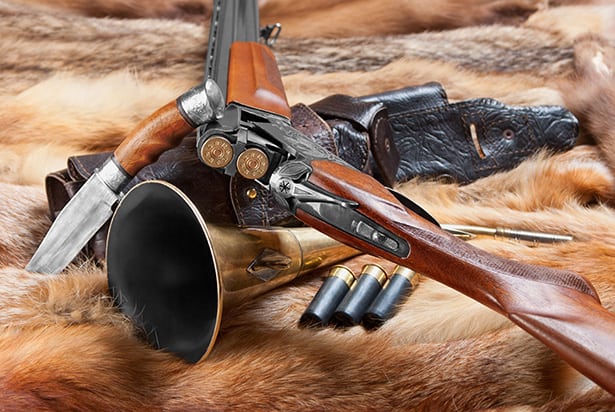
Hunting knives are used to prepare the game for consumption or separating meat from the skin of the game.
Hunting knives are used after the hunting is completed, unlike hunting daggers which may be used themselves to hunt.
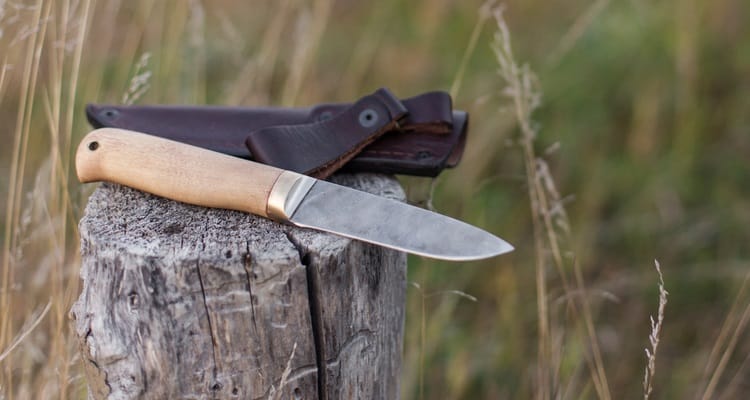
The Kephart Knife has a rich history.
It can serve as both a display piece or as a tool on your tool belt. It is both practical and simple for outdoor use.
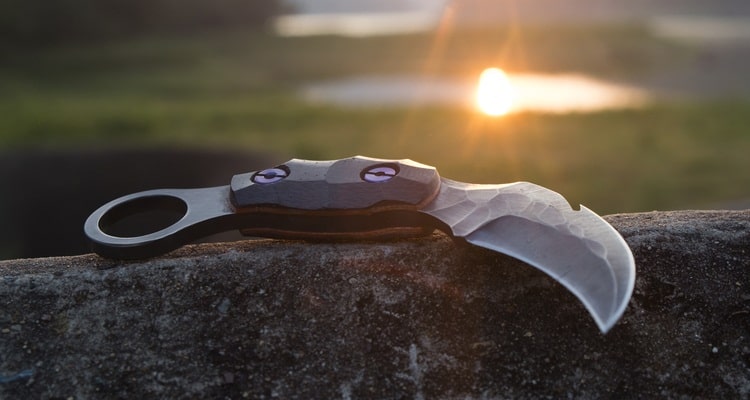
The Karambit Knife is originally an agricultural tool and as it evolved as a weapon, the blade increasingly became more curved to maximize its cutting potential.
Today, the Karambit acts entirely as a weapon with most agricultural features far removed.
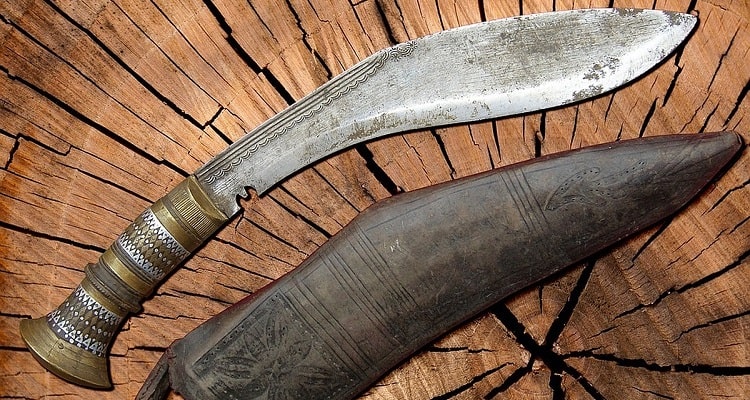
The Kukri Knife, originally used as a traditional weapon in Nepal, is known for its distinctly curved blade.
This knife also works as a great all-purpose cutting tool, making it a staple for serious adventurers.
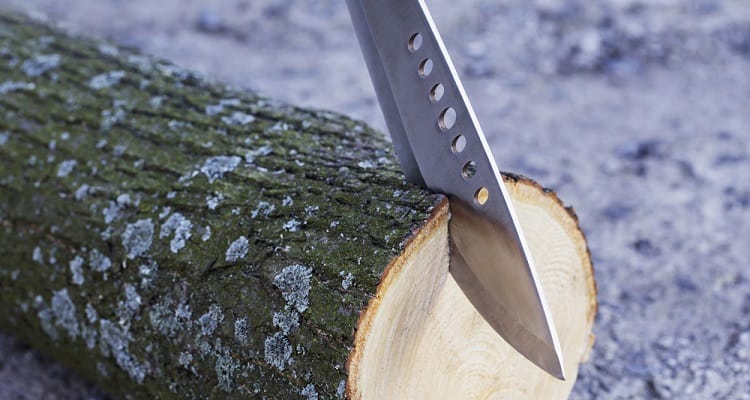
The Machete blade is usually 13 to 18 inches long with a thickness that is less than an inch.
Like many large blades, the machete started off as a tool for agriculture. But the machete is more than just a farmer’s tool. It is also used as a weapon.
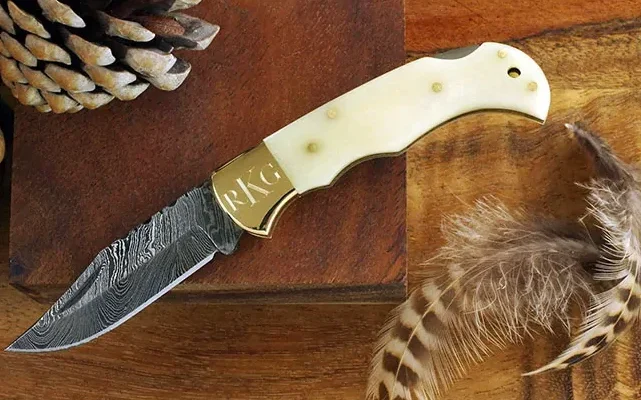
Pocket knives have a myriad of uses while out in the elements.
These flat-edged blades are usually equipped with other multi-tools like a screwdriver, pliers, bottle openers, and other handy gadgets you may not be equipped with while adventuring.
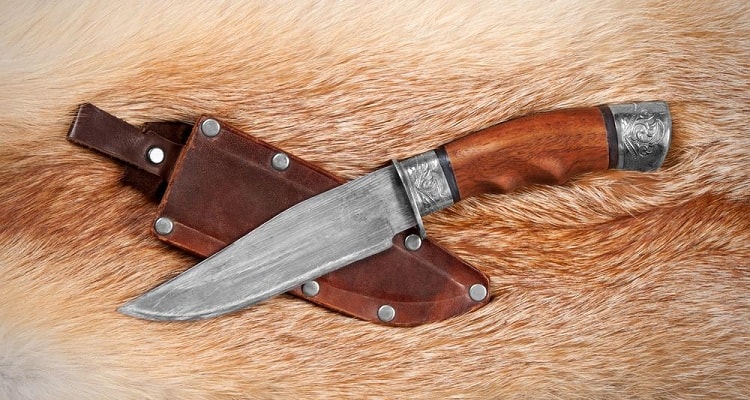
A Skinning Knife is used to separate the meat from the skin of the hunted game.
However, unlike other hunting knives, this blade is specially crafted to keep the meat of the game fresh and clean.
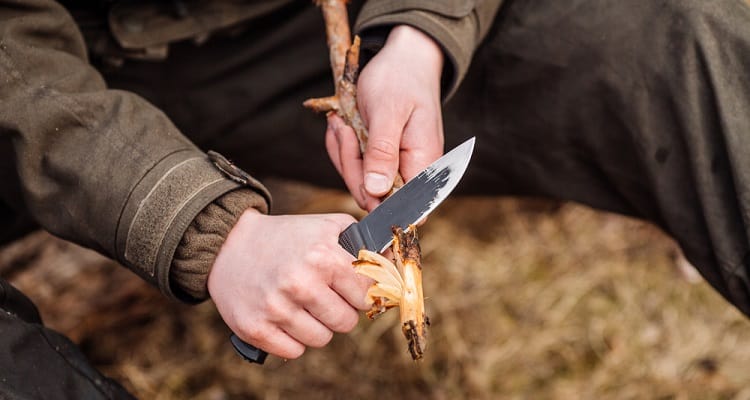
A Survival Knife is a vital tool that is used for protection and for activities within a wilderness environment.
This knife is often issued to members of the military as well as being used by hunters and outdoor enthusiasts for trapping, skinning, and cutting.
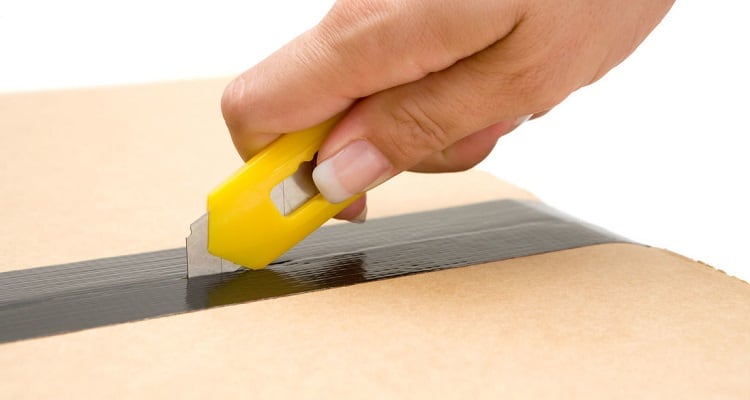
A Box Cutter is a cutting tool with a short blade.
While similar to a utility knife, they are not the same. The difference is that a box cutter has a single long blade with sections along its path, while a utility knife is a retractable or folding blade.
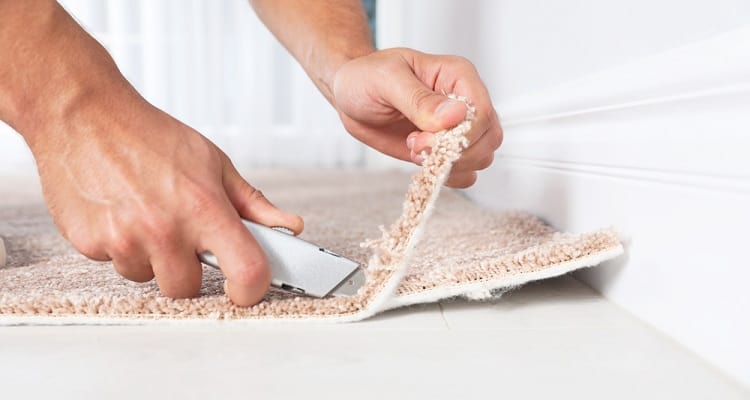
A Carpet Knife provides various options that make it easy to cut carpet and avoid any last-minute problems compared to a regular utility knife or scissors.
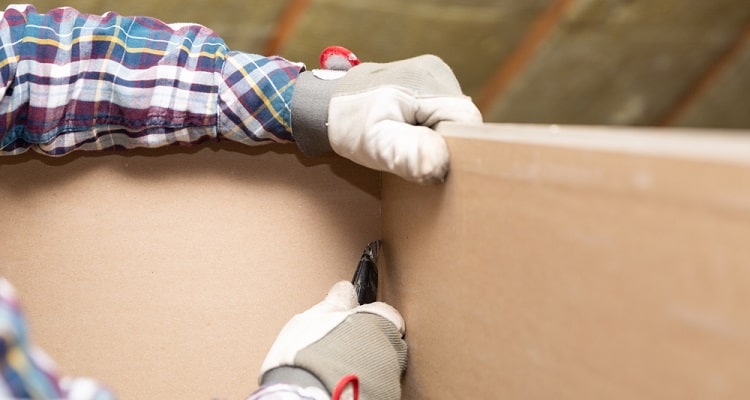
A Drywall Knife is designed to cut through drywall, which is a central layer to the interior of walls.
While drywall knives work well for this purpose alone, their typical sharp, precise straight blades lend themselves to a wide variety of tasks.

The Linoleum Knife is designed to allow you to easily cut through linoleum. The handle, likewise, is designed in a way to improve on this feature.
Linoleum knives make it much easier to cut linoleum and other similar material.
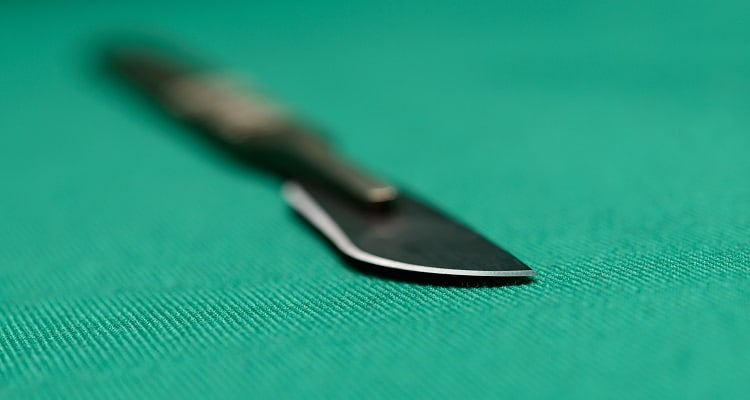
Contrary to what you may believe, Scalpel Blades aren’t just for surgery.
These tiny blades are also great for woodworking, precise fruit and vegetable cuts, and much, much more.
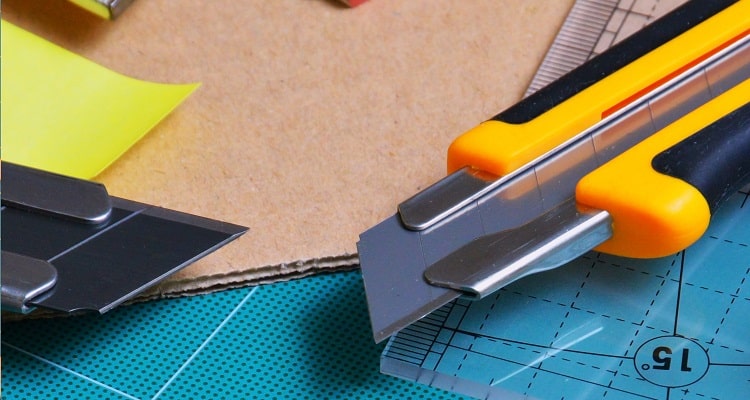
Sometimes known as a Stanley Knife, a Utility Knife is a sharp and sturdy knife, traditionally with a fixed blade.
It can be used with a number of purposes including industrial use such as box cutting, hunting purposes like cutting through hides and cordage, and general kitchen use such as cleaning fish and preparing fowl.
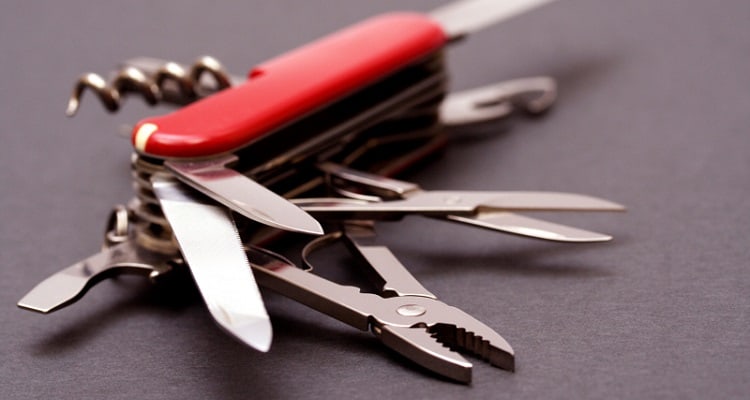
The Swiss Army Knife seems like your typical pocket knife at first glance.
But a Swiss Army knife usually has a variety of tools: screwdrivers, nail files, can openers, and much more.
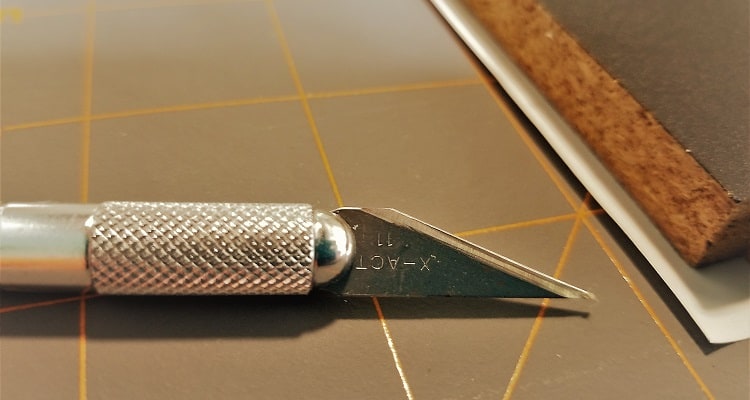
Sometimes known as a precision knife or a utility knife, the X-Acto consists of a thin, sharp blade mounted on a pen-like body with an angled, anti-roll handle.
It is most commonly used for crafting and hobbies and has a number of really handy uses including stenciling, pencil shading, scoring, model patterns, leather work, paper arts, and nail art.

A Chisel can be used in a wide variety of projects.
It can be used to cut or carve many kinds of hard materials such as Stone, Wood, or even Metal.
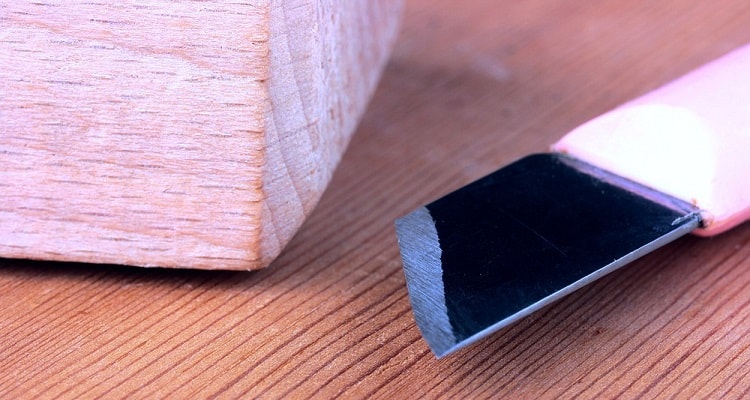
“Kiridashi” translates to “carve-out” or “pointed knife” in Japanese.
The beautiful Kiridashi Knife blade serves as Japan’s general wood carving and outdoor utility knife.
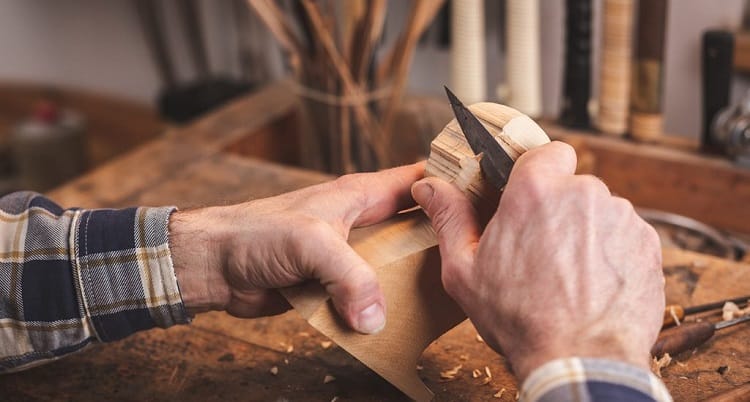
The Sloyd Knife is named partly after the Swedish word Slöjd, meaning handiwork or crafts.
It is super small and is perfect for carving out small details in wood. A Sloyd knife is perfect for smaller wood projects or for added ornate carvings larger wood creations.
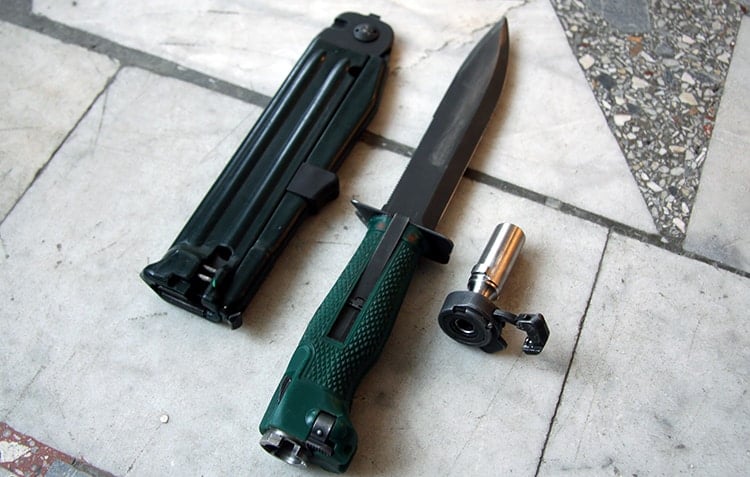
Ballistic knives have an ejectable handle making them primarily used for self-defense.
However, their strong blades make them a great all-purpose outdoors knife should you have the need.
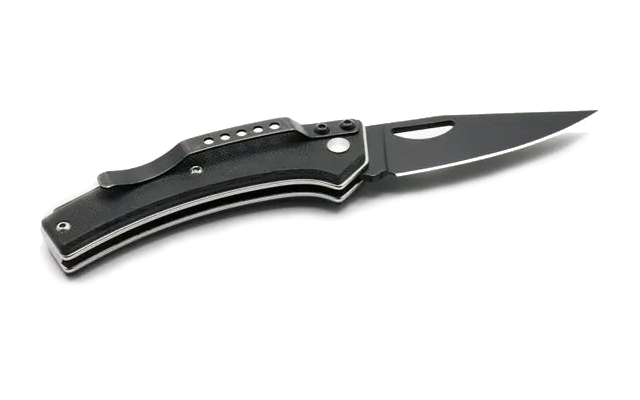
Gravity knives are somewhat like Switchblades in that the blade portion of the knives is contained in the handle.
This knife can be opened with one hand and acts as a great pocket multi-tool while outdoors.
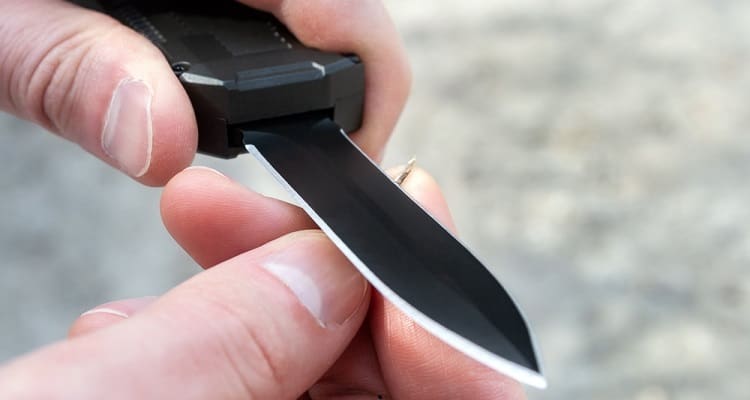
OTF stands for Out-the-Front. The blade of an OTF Knife emerges from the front of the handle with a switch or a button.
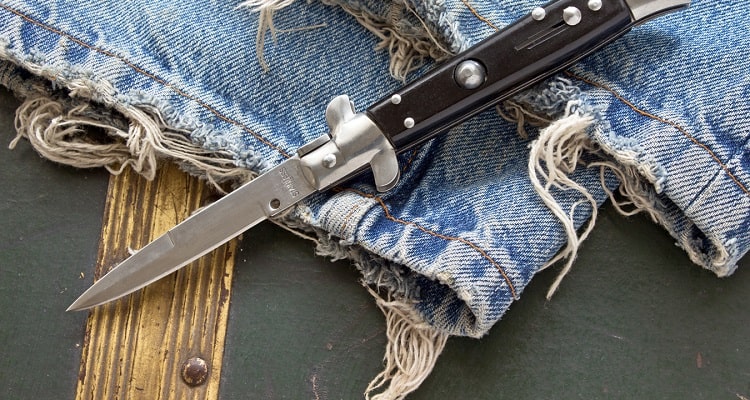
Like the heel of the shoe, the Stiletto Knife version is long, thin, and sharp. This makes the stiletto a very potent stabbing or thrusting weapon.
Unlike most daggers or rapiers, a Stiletto Knife usually has a double-edged design. The result is a knife that can be used for both thrusting and slashing.
Not all knives belong in the kitchen. Below, you’ll find the purpose of some of the most common specialty knives used for hunting, display, and much more.
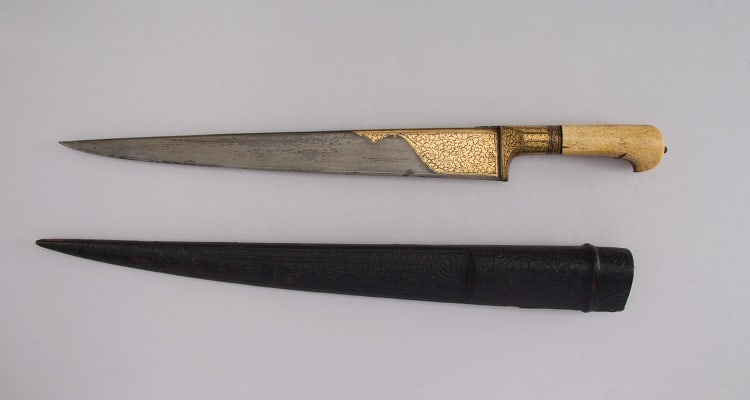
Although it first originated from ancient Persia, the Khyber Knife is more commonly recognized as an Afghani-based sword.
It is both a personal weapon and a sign of adulthood for the tribes living near the Khyber Pass. Khyber is also an amazing display piece.
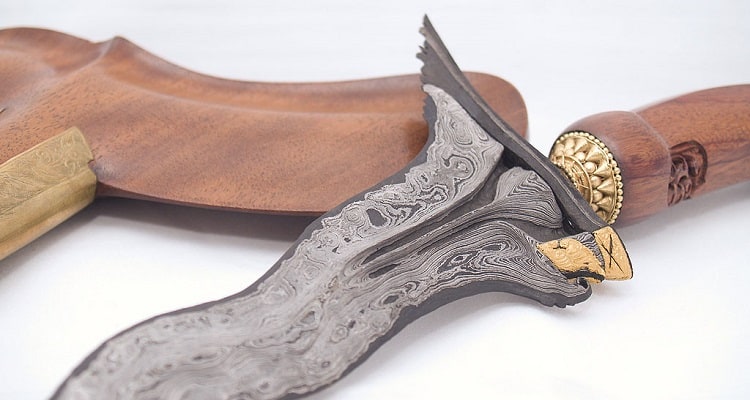
The Kris Dagger, otherwise known as the Keris, is a beautiful, unique blade that makes a valuable part of any knife collection.
Its distinct asymmetrical appearance makes the knife well-worth having on hand.
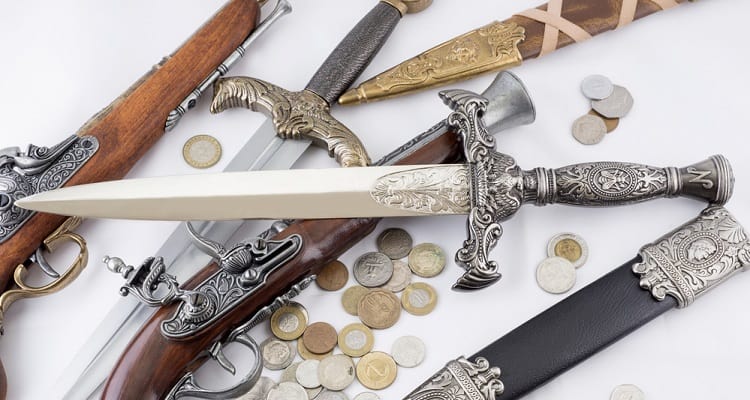
The Scottish Dirk has a rich history behind it.
It is the history of a knife that has had both a practical purpose and a decorative one throughout its existence.
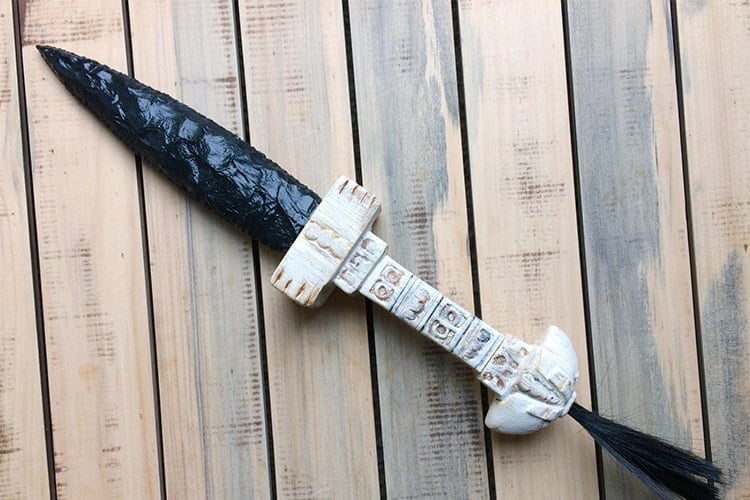
Obsidian blades are one of the sharpest knives available that have a rich background.
These knives are great for display with their unique, often handcrafted appearance.
To support your knife collection, you’ll likely need a number of knife accessories to keep your blades in tip-top shape. Here are some of the most necessary blade supplies for your kitchen and outdoor tools.
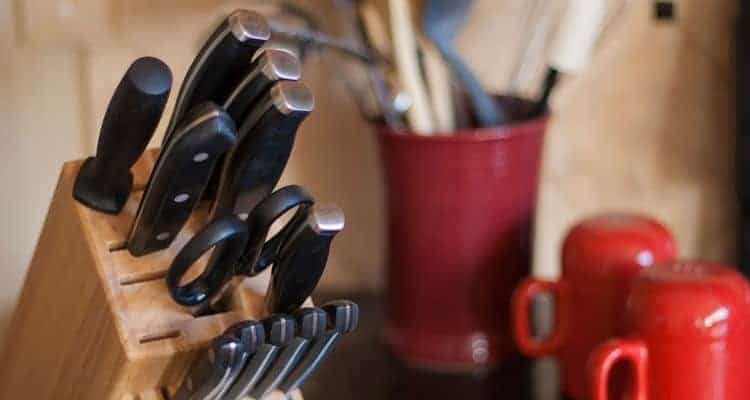
Knife Blocks usually sit on a kitchen counter with varied sized slots for different blade types. These blocks can be great for getting your knives out quickly whenever you’re cooking.
They come in a variety of materials like bamboo and stainless steel.
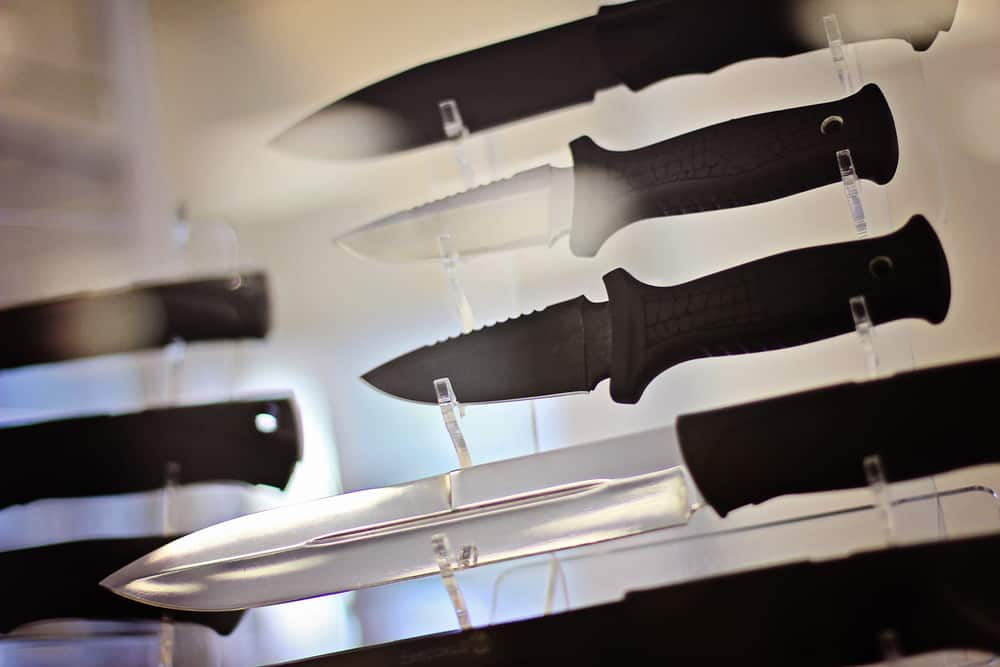
Not all knives are used for cooking or hunting. Some knives bring great aesthetic value to any home or have a rich history that may be appealing to seasoned collectors.
If you have a blade that you use for predominately display reasons, you’ll want to invest in a display case or shelf that adequately holds and displays the blades while still staying safe in your home.
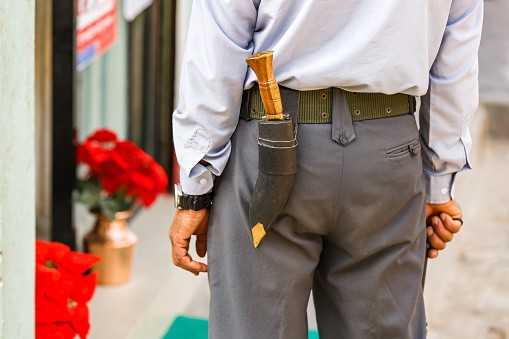
If you have an oversized outdoor knife, it may not be the safest to store in your backpack or in your pocket. In which case, a holster or belt that holds knives with embedded sheathes may be the perfect solution.
These storage cases keep your knives at the ready for when you need to use them while keeping you and your gear as safe as possible.
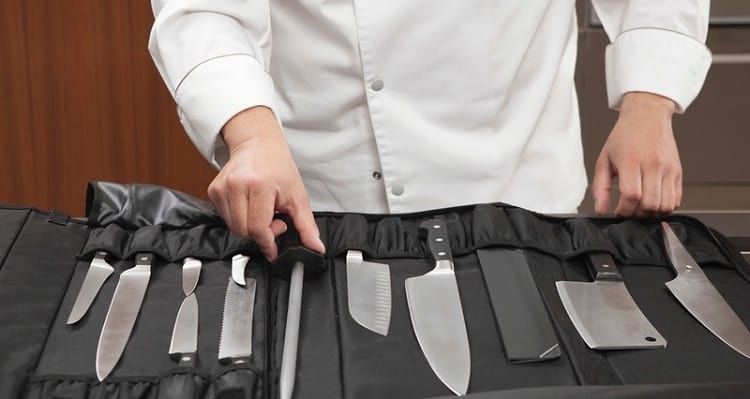
Another storage option for easy transport is the knife roll.
These heavy-duty cloth organizers have individual slots for each of your blades that are easily rolled up once the knives are properly stored.
Knife rolls are great for chefs who may travel from restaurant to restaurant, or desire to use their personal knives while working elsewhere.
They can also be great for outdoor knife storage in a backpack.
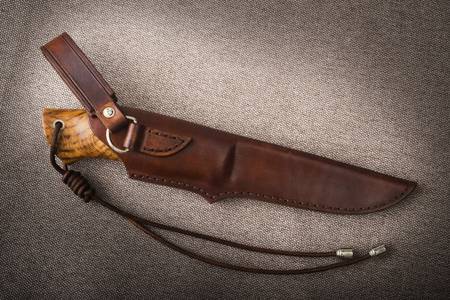
Sheaves sometimes come with your blade purchase and protect your blade from dulling or damage over time.
These are especially important if you plan on keeping your knives in the same drawer as other blades.
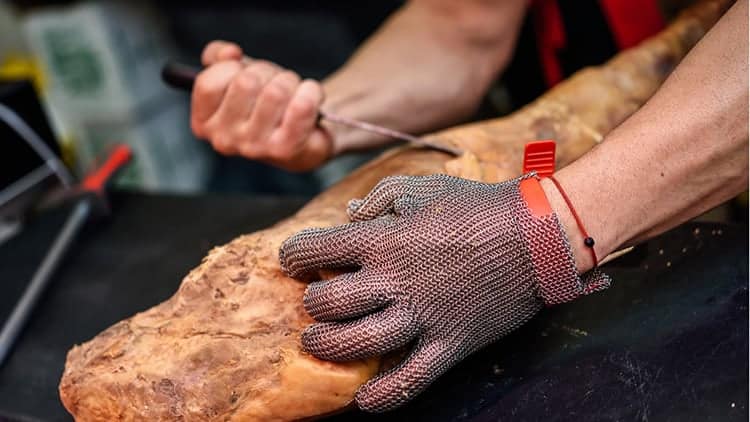
Especially if you’re a beginner, it’s important to strive to use knife protection every time you handle your ultra-sharp blades.
Cut Resistant Gloves make regular knife maintenance so much safer. Be sure to use these gloves when cleaning and sharpening your knives, if not anytime you handle a blade.
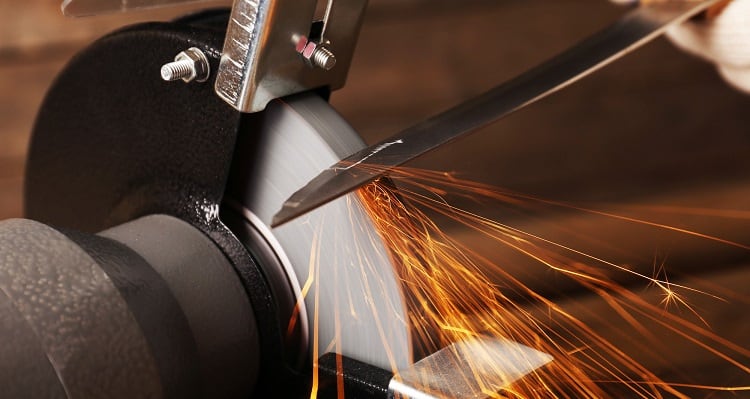
For a more automated approach, you can also find Electric Knife Sharpeners for both kitchen and outdoor knives.
When adjusted properly, these sharpeners can make regular knife maintenance simple and effective on a regular basis.
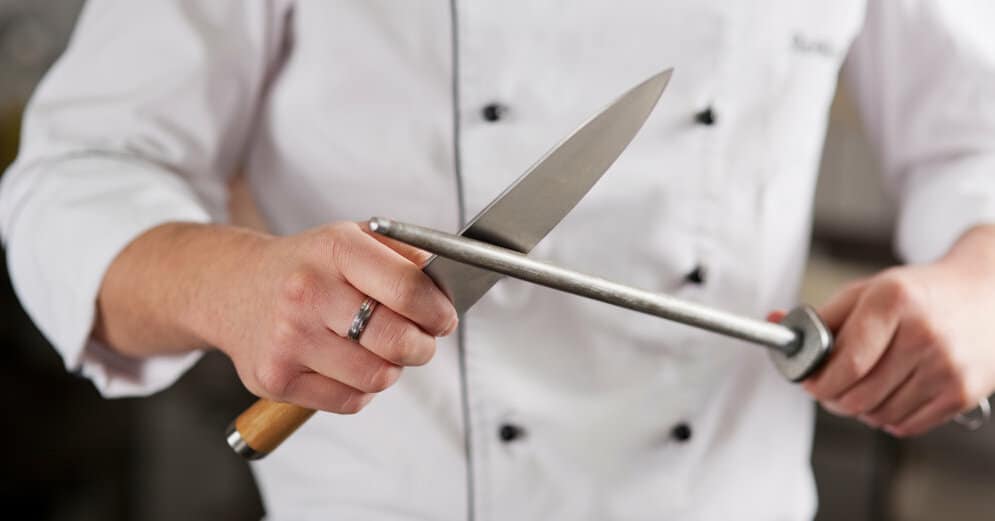
Any seasoned knife owner knows that blades are only as good as the quality of their sharpener.
Knife sharpeners keep your blades fresh, making them safer, more efficient tools.
A Manual Knife Sharpener life a steel rod may be perfect for your stainless steel kitchen knives.
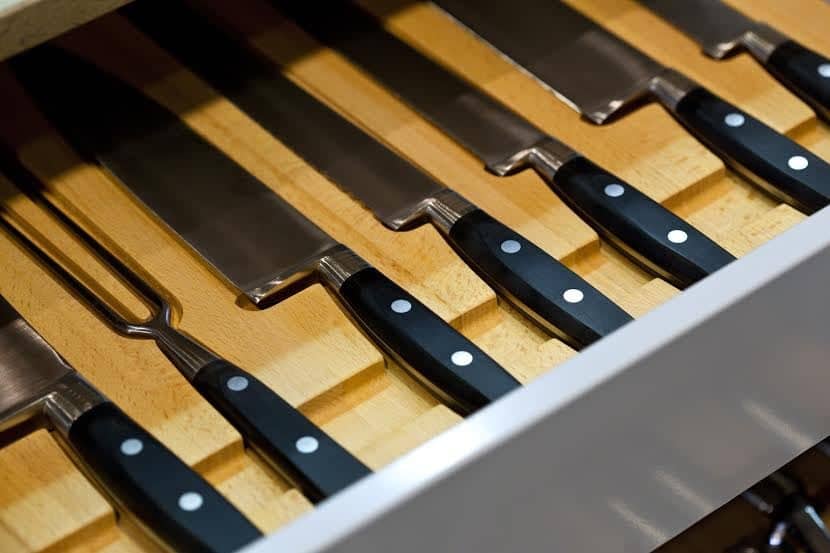
For a more discreet solution, you can purchase a knife in-drawer organizer to prevent your knives from dulling each other.
These storage containers may be a safer solution for homes with small kids or pets since they keep knives out of direct view.
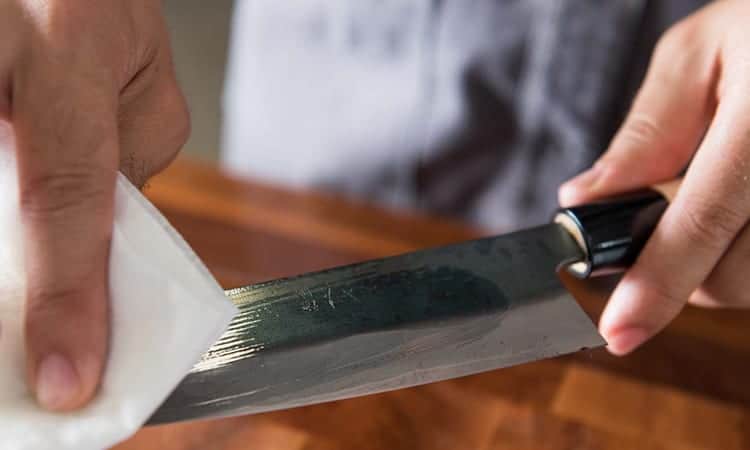
Due to the nature of some blades, knife oil is required to keep some knives in tip-top shape.
While this oil is most commonly used on outdoor blades, it can be a perfect addition to any knife that folds or contracts for storage.
Knife oil helps the blade to bend and fold-out smoothly while protecting the knife for rust or water damage.
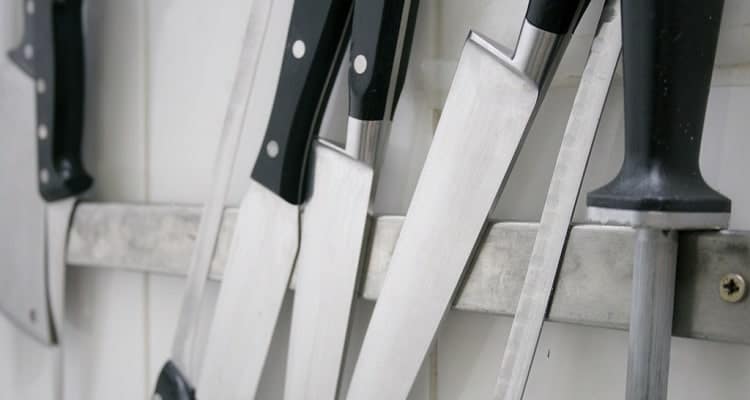
If you are a big fan of stainless steel kitchen blades, a magnetic knife strip may be the best pick for you.
These strips attach on to tile wall or magnetic surfaces and keep your collection on display while storing them in a convenient yet safe manner.
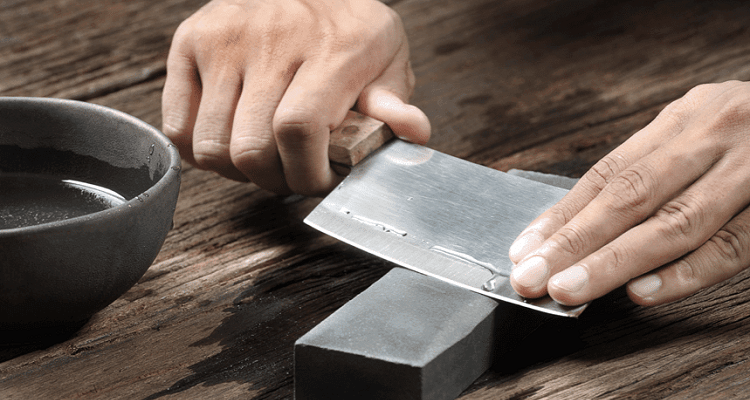
For chef, hunting or outdoor blades, it may be more convenient to sharpen using a sharpening stone.
These stones are perfect for touching up handheld blades since they are compact and easy to handle.
You can also purchase longer models of sharpening stones for kitchen or longer blades, subject to preference.
While having the proper accessories for your blades is more or less essential, it’s important that you also have a basic routine established to properly care for your blades. Follow these general guidelines to keep your blades in tip-top shape.
Most knives do well when stored in a cool, dry place. It’s important that you make sure your knife is in an area away from water since moisture can subject certain blades to rust and other water damage.
Moreover, knives are best kept isolated from one another. This is because too many knives in proximity can dull surrounding blades, not to mention make for a dangerous situation. Knives stored improperly in a crowded drawer can also be damaged by or damage other similarly kept kitchen tools.
Therefore, it is more or less essential that you keep your knives in appropriate sheaths, knife organizers, blocks, or on display with a magnetic strip or specially crafted shelf.
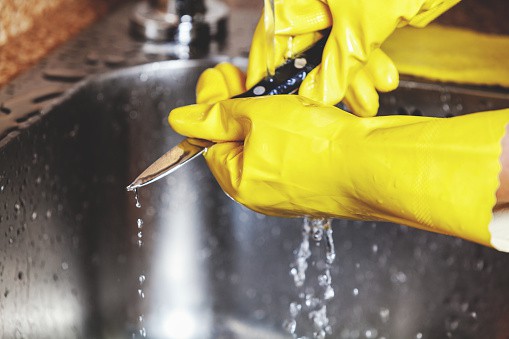
Knives need to be washed properly to keep them in their best shape over time. To do so, you’ll need to make sure you’re wearing proper cut-proof gloves to prevent any injuries. While most knives can be properly cleaned with mild soap and warm water, you’ll want to pay attention to the specific care instructions for your particular blade.
Some porous materials may not work the best with consistent water exposure. In addition, some blades require a regular oiling procedure to keep them properly working. Just remember that not all blades should be cleaned the exact same way, so pay close attention to the care instructions provided to you.
While some knives may advertise that they are dishwasher-friendly, it’s always best to hand wash your blades. Knives washed in the dishwasher can easily scrape against one another causing for unnecessary dulling and damage over time.
Moreover, drying is arguably just as important as the washing procedure to make sure that your blades are kept in tip-top shape. Always use a cut-proof glove when drying your knives, and do so thoroughly. This ensures that your blade won’t be subject to water damage, and keeps out nasty bacteria that can develop when water isn’t properly wicked away.
Regardless of the caliber of the blade, every knife needs a good sharpening every now and then. Sharpening your blades will ensure that your knife is as efficient as it can be. Moreover, using a dull knife is actually less safe than using a freshly sharpened blade. This is because you have to exert more energy while using dull blades which opens the window to more potential accidents.
You can use a sharpening rod, stone, or block to sharpen your blade. There are also automated electric sharpeners that can make the process easier. However, it’s important to note that not all sharpeners can be used on any knife.

Your blade can become severely damaged by using improper sharpening techniques and surfaces. Make sure you are carefully sharpening according to your manufacturer’s instructions. If you’re new to sharpening, there are a ton of free resources online that can give you an introductory lesson into the practice.
Moreover, if the process makes you too nervous all together, you can send your blades off carefully to a professional sharpening service to refresh your best blades. Some farmer’s markets offer this specialty service as well, so be sure to look out for potential service providers in your surrounding area.
This question is more common than you’d think, but it’s pretty difficult to answer— mainly because there is no one right answer. That being said, here are a couple of factors to take into consideration when purchasing a new blade for your home.
All blade designs vary in their weight. Generally speaking, a lightweight blade is more flexible but has less chopping power. This is why paring or boning knives are some of the lightest knives on the market. They are meant for separation rather than chopping themselves.
Conversely, heavier knives have massive chopping power, but they’re much more difficult to maneuver for more precise cooking tasks. An example of a heavy weighted knife would be a meat cleaver, built for hacking through bone.
You may have to work up to using heavier knives though. Some of these blades can weigh a pound or more. They can also be more dangerous since they’re so powerful, so make sure you’re using them safely and with caution.
Blade length varies greatly depending on the purpose of your knife. Most outdoor blades are shorter than kitchen blades since they are built for compact, portable use. There is also heavy variation even within both main knife types.
For example, an outdoor combat knife is likely much longer than a pocket knife. For kitchen blades, a bread knife is going to be much longer than a paring knife since it’s built for long, concentrated blade strokes.
Knives come in a variety of handle styles and materials that can be picked according to preference. While beginner knife users may appreciate the safety and security of a rubberized grip, others may benefit from nylon handles for reducing friction during use. Ultimately, handle material type should be based on what feels most comfortable for you while using your knife.
As you’ll learn, the blade edge varies greatly depending on the blade type. Pay attention to whether or not the knife is serrated, curved, or flat-edged. This will give you an idea of the knife’s intended purpose.
It’s extremely important that you are picking out safe blades. While you can injure yourself using any knife, high-quality blades are less likely to break or slip, ensuring extra safety. You can also look out for blades with other added safety features, like a curved handle to properly separate your fingers from the blade itself. Never use a knife type you haven’t learned how to operate. Do some quick research beforehand to protect yourself and your equipment.
While aesthetics aren’t the most important factor for picking out a good blade, there are certain knives you may buy for predominately display purposes. In this case, you’ll want to do research to make sure your knife is exuding authenticity.
Some historic knives come with certificates to help alleviate some of the confusion. Moreover, you can find blades that have embedded seals or unique metal-alloy patterns for added interest.
At the end of the day, the best way you can pick out a good blade is by trying it out for yourself. Your individual needs should be your top priority. After all, you’re going to be the one using the knife! Don’t be afraid to continuously try out blades until you find the perfect solution for your needs. This process can take time, but it is certainly worth it once you have a knife set you can truly depend on.
In a recent study, the knife injury rate in the USA is around 1.56 injuries for every 1000 people every year, with lacerations making up 94% of all injuries. This crucial number signifies that knife injuries are very common. To significantly reduce accidents, it is indeed very important to know the basics of knife safety.

Here are six knife safety tips to avoid cuts and injuries:
Always use a good quality, well-made knife. While cheaper knives may be better for your budget, they will tend to be subject to breakage and even blade snapping, which can easily cause accidents.
Always keep hands away from the blade of your knife – the knife has a handle for a reason!
When washing dishes, never leave a knife in the sink or washing bowl when filled with soapy water. Unfortunately, placing hands into soapy water containing a knife is one of the most common causes of injury in the USA.
If you lose your grip on a knife, let it fall. Stand back and never, under any circumstances, try to catch it.
Never wave a knife around during use, for example when gesticulating or performing a demonstration. Should you need to use your hands, carefully place the knife down on a safe surface first.
Always use the right knife for the job and use your knife only for the intended purpose. Read Knife Buzz’s 36 Knife Safety Tips here.

There are a broad range of knives for cooking, spending time in the outdoors, self defense, and other uses.
The main knife types include:
The ridges on the back of a knife provide a better grip. This keeps your hand from slipping while you cut with the knife. This improved grip also allows you to exercise better control of the knife.
The best knives to cut bone are butchers knives and meat cleavers. Kitchen knives are intended for cutting meat, vegetables, and fruits. Outdoors and hunting knives are mostly designed for cutting skin and meat, and pocket knives are too small to provide the force required.
There is a fine line between knives and swords. Some sources may consider them to belong in the same category. There are a few key differences between them, though.
Knives are meant to be held in one hand and are used to cut smaller materials. Swords are held in both hands, though some can be used one-handed as well. They are used for cutting large items and stabbing.
Katanas are traditional Japanese swords. They are very sharp and strong. Given enough force behind them, a katana could easily cut through bone, as well as other hard materials, such as metal and armor.
A strong sword with enough force behind it, such as a Katana Sword, could make cuts in a gun. However, it probably would not be able to cut through a gun barrel, at least not without incurring damage or breaking the blade.
A sharp knife has a thin edge and creates more pressure. As the knife dulls, its edge becomes wider and creates less pressure. The reduced pressure increases the difficulty in making clean cuts. Knives should be kept sharp for improved performance.
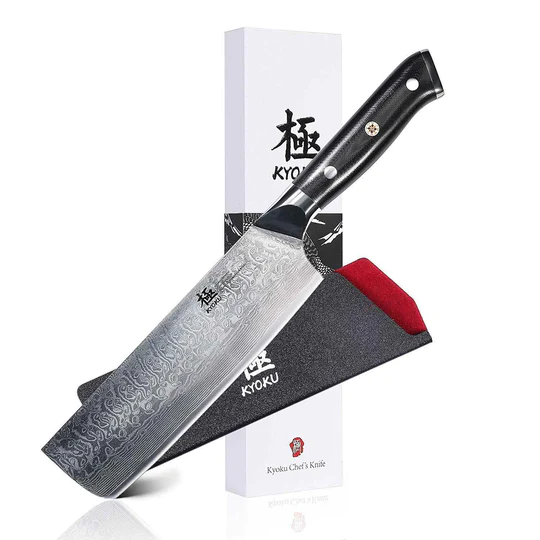
Knife Buzz offers independent product reviews on a wide range of knives used in the kitchen, home, and outdoors. We make it easy for you to find the right knife at the best price.